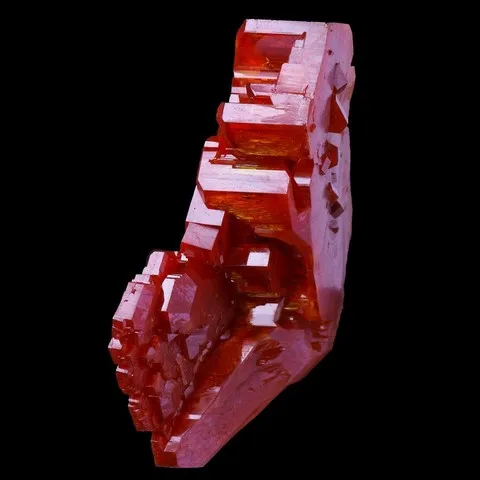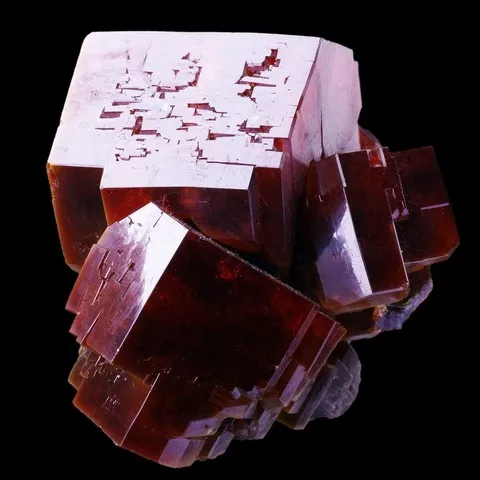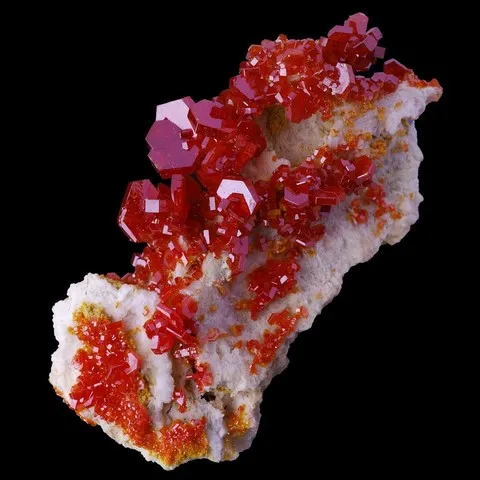What are vanadates in mineralogy ?
Vanadates : definition
Vanadates are rare minerals, about thirty in number, of which the best known representative is vanadinite Pb5(VO4)3Cl.
Equivalent tetrahedral units (AsO4)3- and (PO4)3- are the basis of arsenates and phosphates. P5+, As5+ and V5+ are easily replaced in the anionic groups, there are transition terms between phosphates, arsenates and vanadates : pyromorphite Pb5(PO4)3Cl, mimetite Pb5(AsO4)3Cl and vanadinite Pb5(VO4)3Cl, for example , form between them extended but not complete series.



